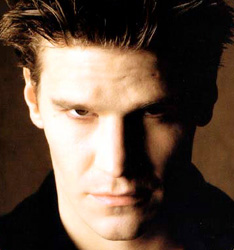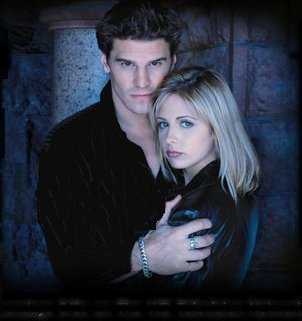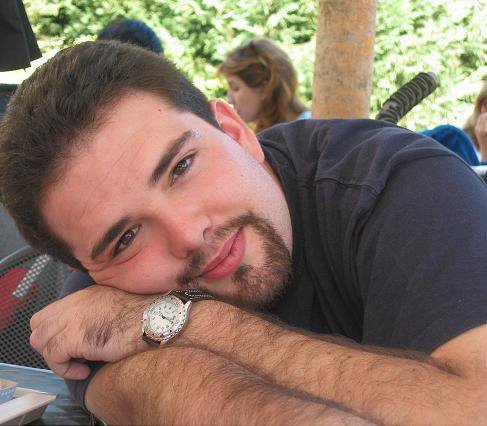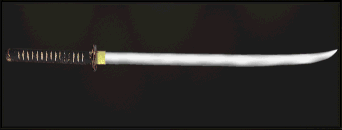Teoría del Caos: Una "Breve" Introducción, parte II
Un empleado de IBM, Benoit Mandelbrot era un matemático que estudiaba esta auto-similitud. Una de las áreas que estaba estudiando era la fluctuación en el precio del algodón. No importa como se analizaran los datos de los precios del algodón, los resultados no se ajustaban a la distribución normal. Mandelbrot finalmente obtuvo todos los datos disponibles de los precios del algodón, desde el año 1900. Cuando analizó los datos en los ordenadores de IBM, observó un hecho asombroso:
Los números que producen aberraciones desde el punto de vista de la distribución normal producen simetría desde el punto de vista de la escala. Cada cambio de precio particular era aleatorio e impredecible. Pero la secuencia de los cambios era independiente de la escala: las curvas para los cambios del precio diario y mensual encajaban perfectamente. Increíblemente, analizados de la forma de Mandelbrot, el grado de variación había permanecido constante a través del tumultuoso periodo de sesenta años que pasaba por dos Guerras Mundiales y una depresión. (James Gleick, Caos – Creando una Nueva Ciencia, página. 86)
Mandelbrot no sólo analizó los precios del algodón, sino muchos otros fenómenos también. En uno de ellos, se preguntaba por la longitud de una línea costera. Un mapa de una línea de costa muestra muchos entrantes. Sin embargo, al medir la longitud de una línea costera en un mapa perderemos los entrantes que son demasiado pequeños para mostrarse en el mapa. De igual modo, caminando a lo largo de la costa perdemos los microscópicos entrantes que hay entre los granos de arena. No importa lo mucho que se amplíe una línea costera, siempre habrá más entrantes visibles si la ampliamos más.
Un matemático, Helge von Koch, captó esta idea en una construcción matemática llamada curva de Koch. Para crear una curva de Koch, imagina un triángulo equilátero. En el tercio central de cada lado, añade otro triángulo equilátero. Sigue añadiendo nuevos triángulos en la parte central de cada lado, y el resultado es una curva de Koch. (Ver figura 4).
Una ampliación de la curva de Koch tendría el mismo aspecto que el original. Es otra figura auto-similar. La curva de Koch nos brinda una interesante paradoja. Cada vez que añadimos nuevos triángulos a la figura, la longitud de la línea se hace mayor. Sin embargo, el área interior a la curva de Koch permanece menor que el área de un círculo dibujado alrededor del triángulo original. Esencialmente, es una línea de longitud infinita que rodea un área finita.
Para evitar esta dificultad, los matemáticos inventaron las dimensiones fractales. Fractal viene de la palabra fraccional. La dimensión fractal de la curva de Koch está sobre el 1,26. Una dimensión fraccional es imposible de concebir, pero tiene sentido. La curva de Koch tiene más desigualdades que una curva lisa o una línea, que tienen una dimensión. Dado que tiene más desigualdades y es más arrugada, es mejor para contener espacio. Sin embargo, no es tan buena para llenarla de espacio como puede ser un cuadrado de dos dimensiones, debido a que en verdad no tiene área. Por tanto tiene sentido que la dimensión de una curva de Koch esté en algún lugar entre uno y dos.
Fractal ha llegado a significar cualquier imagen que muestre el atributo de la auto-similitud. El diagrama de bifurcación de la ecuación de poblaciones es fractal. El Atractor de Lorenz es fractal. La curva de Koch es fractal.
Durante este tiempo, los científicos encontraron muchas dificultades para obtener publicaciones de sus trabajos sobre el caos. Dado que no habían mostrado aún relevancia en situaciones del mundo real, la mayoría de los científicos no pensaban que los resultados de los experimentos en el caos fuesen importantes. Como resultado, incluso aunque el caos es un fenómeno matemático, la mayoría de las investigaciones en el caos se hicieron por personas de otras áreas como la meteorología y la ecología. El campo del caos creció rápidamente como un pasatiempo para los científicos que trabajaban en problemas que tal vez tenían algo que ver con él.
Más tarde, un científico llamado Feigenbaum estaba mirando de nuevo el diagrama de bifurcación. Miraba la velocidad a la que llegaban las bifurcaciones. Descubrió que aparecían a una tasa constante. La calculó como 4,669. En otras palabras, descubrió la escala exacta a la que eran auto-similares. Haz el diagrama 4,669 veces menor, y aparece igual a la siguiente región de bifurcaciones. Decidió mirar otras ecuaciones para ver si era posible determinar factores de escala también para ellas. Para su total sorpresa, el factor de escala era exactamente el mismo. No solo esta compleja ecuación mostraba regularidad, la regularidad era exactamente la misma con una ecuación mucho más simple. Hizo el intento con muchas otras funciones, y todas ellas produjeron el mismo factor de escala, 4,669.
Este fue un descubrimiento revolucionario. Había encontrado que una clase entera de funciones matemáticas se comportaban del mismo modo predecible. Esta generalización ayudaría a otros científicos a analizar fácilmente ecuaciones caóticas. La generalización dio a los científicos las primeras herramientas para analizar un sistema caótico. Ahora simplemente podían usar una ecuación simple para predecir el resultado de una ecuación más compleja.
Muchos científicos exploraban ecuaciones que creaban ecuaciones fractales. La imagen fractal más famosa es también una de las más simples. Es también conocida como el conjunto de Mandelbrot. La ecuación es simple: z = z^2+c. Para ver si un punto es parte del conjunto de Mandelbrot, simplemente toma un número complejo z. Elévalo al cuadrado, y súmalo al número original. Eleve al cuadrado el resultado, y súmalo al número original. Repite esto hasta el infinito, y si los números que obtienes tienden a infinito, no es parte del conjunto de Mandelbrot. Si se mantienen por debajo de un cierto nivel, es parte del conjunto de Mandelbrot. El conjunto de Mandelbrot es la sección más interna del dibujo, y cada distinta sombra gris representa lo alejado que está ese punto en particular. Una característica interesante del conjunto de Mandelbrot es que los montículos circulares encajan con el gráfico de bifurcación. El fractal de Mandelbrot tiene la misma auto-similitud vista en las otras ecuaciones. De hecho, ampliando en profundidad lo suficiente un fractal de Mandelbrot finalmente aparecerá una réplica exacta del conjunto de Mandelbrot, perfecto en cada detalle.
Las estructuras fractales se han revelado en muchas áreas del mundo real, además de en la mente de los matemáticos. Las ramificaciones de los vasos sanguíneos, las ramas de un árbol, la estructura interna de los pulmones, los gráficos de datos del mercado de valores, y muchos otros sistemas del mundo real tienen todos algo en común: son todos auto-similares.
Científicos de la UC Santa Cruz encontraron caos en el goteo del agua de un grifo. Tomando datos de un grifo que gotea y tomando datos de los periodos de tiempo, descubrieron que a cierta velocidad de flujo, el goteo no tenía lugar en tiempos iguales. Cuando realizaron los gráficos de los datos, descubrieron que el goteo en efecto seguía un patrón.
El corazón humano también sigue un patrón caótico. El tiempo entre latidos no se mantiene constante; depende de la actividad que la persona está realizando, entre otras cosas. Bajo ciertas condiciones, el latido puede acelerarse. Bajo condiciones distintas, el corazón late de forma errática. Podría incluso llamarse latido caótico. El análisis del latido puede ayudar a los investigadores médicos a encontrar formas de colocar un latido anormal de nuevo en un estado seguro, en lugar del caos incontrolado.
Los investigadores descubrieron un conjunto simple de tres ecuaciones que dibujaba un helecho. Esto inició una nueva idea – tal vez el ADN no codificaba exactamente el crecimiento de las hojas, sino una fórmula que controlaba su distribución. El ADN, incluso aunque mantiene una sorprendente cantidad de datos, no puede mantener todos los datos necesarios para determinar dónde va cada célula del ser humano. Sin embargo, usando fórmulas fractales para controlar como crear nuevas fibras nerviosas y vasos sanguíneos, el ADN tiene información más que suficiente. Se ha especulado que el cerebro mismo podría estar organizado de alguna forma de acuerdo con las leyes del caos.
El caos tiene aplicaciones incluso fuera de la ciencia. El arte digital se ha transformado en algo más realista a través del uso del caos y los fractales. Ahora, con una simple fórmula, un ordenador puede crear un hermoso, y realista árbol. En lugar de seguir un patrón regular, la corteza del árbol puede crearse de acuerdo con una fórmula que casi, pero no del todo, se repite.
La música también puede crearse usando fractales. Usando el Atractor de Lorenz, Diana S. Dabby, una estudiante graduada en ingeniería eléctrica en el Instituto Tecnológico de Massachusetts, ha creado variaciones de temas musicales. ("Bach to Chaos: Chaotic Variations on a Classical Theme", Science News, 24 de Diciembre de 1994). Asociando las notas musicales de una pieza de música como el Preludio de Bach en C con las coordenadas x del atractor de Lorenz, y ejecutándolo en un programa de ordenador, creó variaciones del tema de la canción. La mayoría de los músicos que escucharon los nuevos sonidos creyeron que las variaciones eran muy musicales y creativas.
El Caos ha tenido ya un efecto duradero en la ciencia, y aún queda mucho por descubrir. Muchos científicos creen que la ciencia del Siglo XX será conocida solo por tres teorías: la relatividad, la mecánica cuántica y el caos. Los aspectos del caos se nos muestran en todos los lugares del mundo, desde las corrientes de los océanos al flujo de la sangre a través de los vasos sanguíneos, las ramas de los árboles y los efectos de turbulencias. El caos se ha convertido de forma ineludible en parte de la ciencia moderna. Como el caos cambió de una teoría poco conocida a una ciencia completa en sí misma, ha recibido una generalizada publicidad. La teoría del caos ha cambiado la dirección de la ciencia: a los ojos del público general, la física no es tan solo simplemente el estudio de partículas subatómicas en un acelerador de partículas de mil millones de dólares, sino el estudio de sistemas caóticos y cómo trabajan.
Autor: Gregory Rae
Traductor: Manuel Hermán
Etiquetas: ciencia, curiosidad








